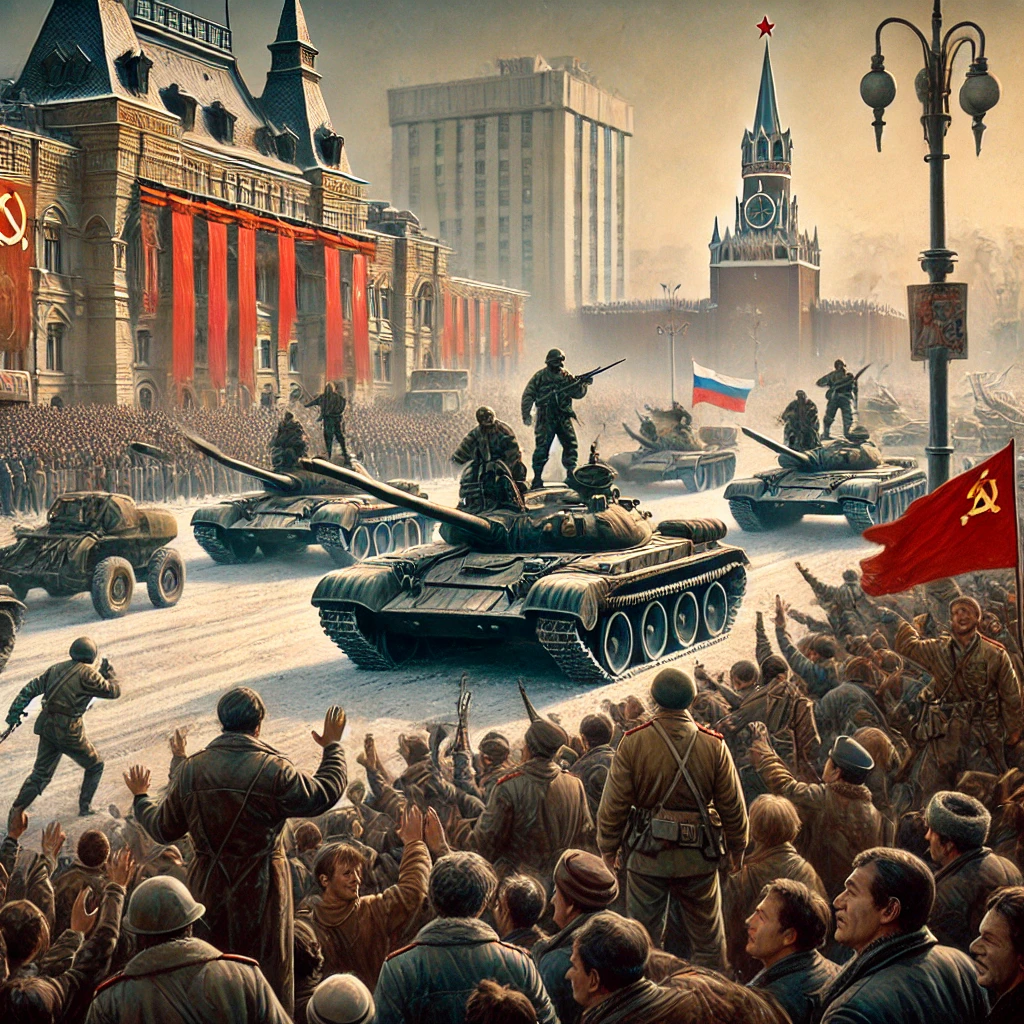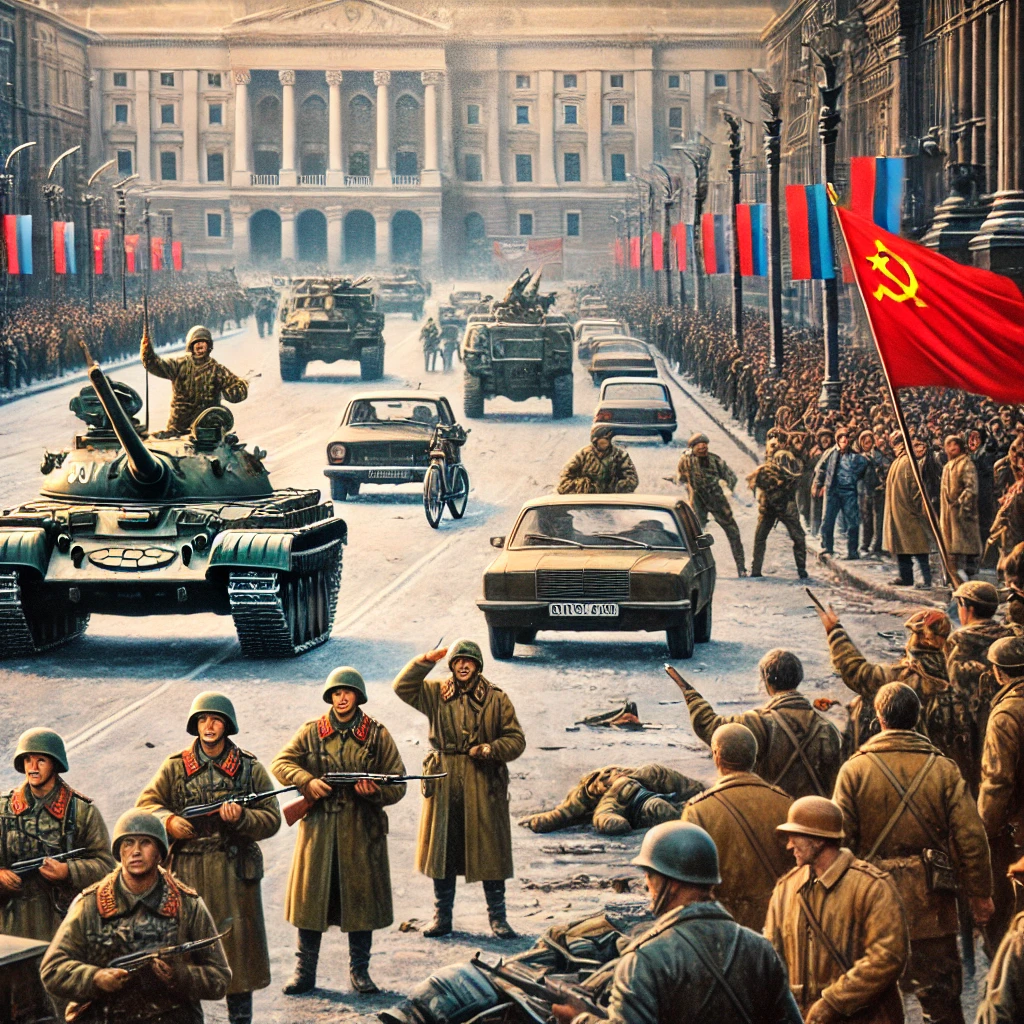On August 18, 1991, hard-line members of the Soviet government attempted a coup against President Mikhail Gorbachev, marking a critical turning point in Soviet history. The coup was orchestrated by a group known as the State Committee on the State of Emergency (GKChP), which was composed of conservative Soviet officials opposed to Gorbachev’s reform policies and the perceived weakening of central authority. The coup leaders sought to restore the old guard and reverse Gorbachev’s efforts towards political liberalization and economic restructuring.
Gorbachev was on vacation in Crimea at the time of the coup. The conspirators took control of key government institutions and declared a state of emergency, effectively placing Gorbachev under house arrest. They attempted to seize control of the media and suppress dissent, but their efforts were met with immediate resistance from various segments of the Soviet population and political figures.

The Public Response and Collapse of the Coup
The coup attempt faced significant opposition from both the public and key political figures. Boris Yeltsin, then the President of the Russian Soviet Federative Socialist Republic (RSFSR), emerged as a prominent leader against the coup. Yeltsin took a strong stand against the coup plotters, mobilizing mass protests and calling for the preservation of Gorbachev’s reform agenda. His defiant stance, including famously addressing the crowds from atop a tank outside the Russian White House, galvanized public resistance and undermined the coup’s legitimacy.
The coup rapidly unraveled as it became clear that the plotters lacked widespread support. Military units and local authorities, who were initially ordered to suppress dissent, were reluctant to enforce the coup leaders’ directives. The Soviet people’s resistance, combined with the lack of a coordinated response from the coup organizers, led to the collapse of the coup within a few days. By August 21, the hard-liners had been arrested or fled, and Gorbachev returned to Moscow.

The Aftermath and Historical Impact
The failed coup had significant repercussions for the Soviet Union and its future. The collapse of the coup attempt effectively undermined the hard-line conservative faction within the Soviet government and accelerated the process of political reform and decentralization. The coup’s failure also greatly weakened Gorbachev’s position and emboldened separatist movements within the Soviet republics.
In the aftermath of the coup, the Soviet Union faced increasing pressure from nationalist movements and demands for independence. The events of August 1991 hastened the dissolution of the Soviet Union, which officially occurred on December 26, 1991. The coup and its aftermath marked the end of the Soviet era and the beginning of a new political and economic landscape in Eastern Europe and Central Asia.

The August 18, 1991 coup attempt against Mikhail Gorbachev was a pivotal event in the history of the Soviet Union. The failure of the coup demonstrated the deep divisions within Soviet leadership and highlighted the growing desire for reform and change. The events of this day played a crucial role in shaping the course of Soviet and post-Soviet history, leading to the eventual dissolution of the Soviet Union and the emergence of new independent states.
